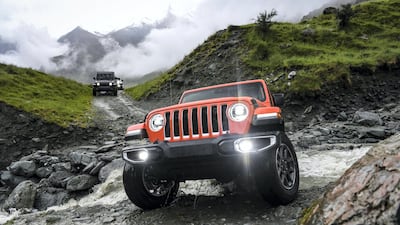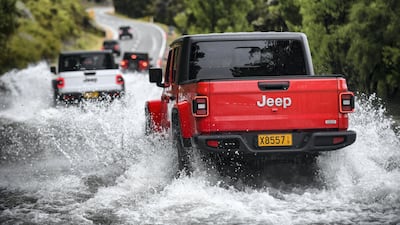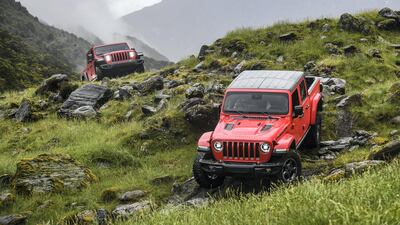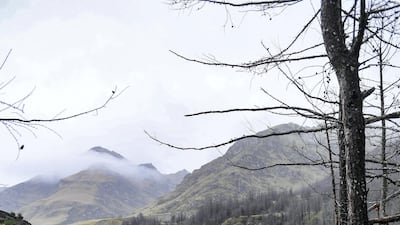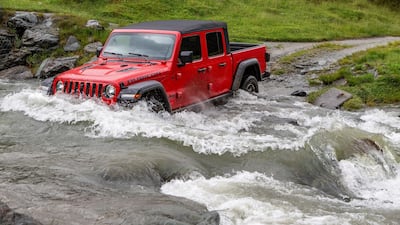As I was sitting behind the wheel of the new Jeep Gladiator, deep in Lord of the Rings country in New Zealand, the rain hit the canvas roof with ferocity as a loud clap of thunder sounded and a lightning bolt tore through the scenery.
The fact we were perched on a muddy incline preparing to cross a flooded river wasn't our greatest concern – it was the herd of cows and sheep blocking our path, each giving us the eye as they sought shelter under our Jeeps. Then the hail came. We needed to move. The script could not have been written any better for a fleet of Gladiators driven by journalists from across the world in an environment that could have had the better of the most capable 4x4s.
Car companies will occasionally prepare an off-road course for media drives, which they believe will test their car up to its specified tolerances with carefully graded descents at just the right angle, creek crossings at the right depth and routes over hills with a breakover angle needed to avoid becoming beached on top of the crest. But not this time. All the best intentions and detailed planning from Jeep's events team were thrown out the window as unseasonal floods and wild weather hit picture-perfect Queenstown as we set off.
For the record, the Gladiator possesses a 47-degree approach angle with a 25-degree departure angle and 760 millimetres of wading depth, so it's no pushover in the rough. It is based on the capable Jeep Wrangler, after all. But we surely surpassed these tolerances at least once in our desperate efforts to cross a swollen river that had risen unexpectedly during a cloudburst so as not to be stranded on what became an island a few hours later. However, with some quick rerouting of areas that collapsed into the rivers, our flotilla set forth into the unknown.
The Gladiator marks the return of Jeep to the pick-up market with a four-door, five-seat cab chassis platform based on the venerable JL Wrangler, attached to a 1.5-metre long, 1.27-metre wide box that can carry up to 620 kilograms of payload. The new rear end features a five-link rear suspension that allows it to tow up to 2,720kg.
It's powered by Jeep's tried and tested 3.6-litre Pentastar V6 engine that develops 285 brake horsepower and 360Nm of torque, attached to an eight-speed automatic transmission. What's great news for Jeep fans is that it retains the traditional plug 'n' play bodywork with removeable door panels, a full length, fully foldable canvas roof and, best of all, a fold-flat windscreen. A removable three-piece fibreglass hardtop is also available.
_________________
As the Hummer makes a comeback, take a look at its many iterations:
_________________
Four versions make up the range, comprising the Sport, Sport S, Overland and Rubicon. Our steed for the day was the more street-focused Overland. We may have been initially concerned about the vehicle's ability to handle the slippery conditions in New Zealand, but after seven hours of unplanned climbing, slipping, wading, pounding rocks and driving home, we found it was easily up to the task.
Compared with the regular Jeep Wrangler, the Gladiator is 788mm longer and has an extra 493mm between the front and rear wheels, which not only increases the interior passenger space but Jeep claims it also improves the ride and handling when carrying a full load. We'll have to take their word for it, as our cars were sans cargo.
Importantly, the Gladiator has some competition on the way this year in the form of the Land Rover Defender, which has been the Gladiator's main rival for more than half a century, and the much-anticipated new Ford Bronco. The Bronco has not yet shown its face, but the Defender made its public debut at last year's Dubai International Motor Show and is sure to attract many comparisons this year. While the Land Rover has its clever All-Terrain Response System, the Gladiator uses an old-school mechanical transfer case, shifting from two-wheel drive to four-wheel drive high range and four-wheel drive low range for the tough stuff.
The Jeep's only concession to the modern world is a button that gives the car a better spread of torque for rock climbing in low range and is more suited to high-speed runs across the desert dunes in high range. The best way to sum up the difference between the pair is this: the Gladiator is the car you could leave outside in the rain or sand with the windows down or even the doors removed and then have no concerns about throwing a bale of hay or a goat in the back. The new Defender is more of a family-oriented SUV than a farming workhorse, with an interior closer to its Discovery stablemate that you wouldn't want to muddy.
The Gladiator remains a nod to the past of easy, mechanical four-wheel drives that fits a niche every other SUV manufacturer has abandoned. It’s for the serious off-roader who doesn’t mind a bit of grit in the car because it can be easily cleaned and maintained. However, it’s also the last of this breed as Jeep has announced its intention to go electric by 2022, which makes this model perhaps even more desirable for the off-roading enthusiast.
